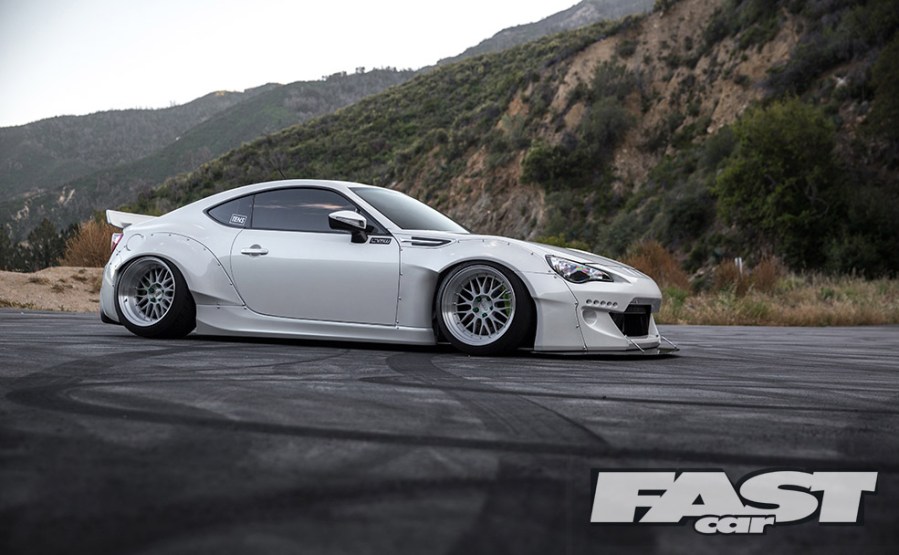Lots of names, but one great car. In this GT86 / BRZ / FR-S tuning guide, we take a look at how to make this rear drive Subaru/Toyota collaboration even better.
First appearing in 2012 and designed as a modern take on the legendary Toyota AE86, this relatively low-cost and light-weight rear wheel drive sports car has been in production for over a decade now and has gathered a serious modification scene behind it thanks to it’s massive tuning potential.
Originally called the FT86 in it’s concept form and still called that in some countries, it is simply the Toyota 86 in most the world. In Europe, it’s the GT86, and there are re-badged and re-styled versions sold as the Scion FR-S and Subaru BRZ. This range of names makes for a confusing situation to say the least, so for the rest of this feature we will simply call them the Z*6 chassis, as the chassis code for the Toyota and Scion versions of this first-generation car is ZN6, and Subaru version is the ZC6.
These cars are great fun in standard form. They weigh around 1200kg, have almost a 50/50 weight distribution, and make around 200 horsepower from their naturally aspirated Subaru FA series boxer engines. Plus, Toyota opted to send that power to the rear wheels via a six-speed manual gearbox and limited-slip differential. I mean, what more could you want? Well, naturally, the car tuning scene always wants more, and these cars are a perfect base for modification, just like the original AE86 was.
GT86 / BRZ / FR-S tuning guide
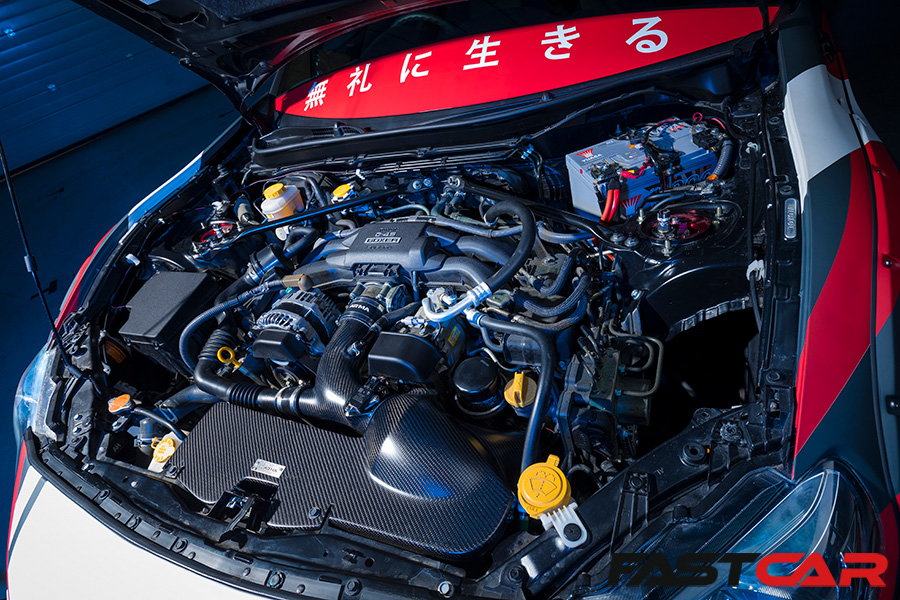
Engine
The Subaru FA20D (known as 4U-GSE in Toyota terms) engine in these cars is a four-cylinder 16 valve boxer engine that makes between 197-205bhp depending on year. But, unlike previous ~200bhp Subaru boxer engines, this thing is non-turbo, which means it’s far revvier than the old EJ20 turbo engines. On the other hand, it doesn’t have anywhere near as much torque, especially lower down, making around 50lb/ft less and at a far higher engine speed. Overall, this means that the engine needs pushing hard to get the most out of it.
So, what can you do to spice the Z*6 chassis up a bit in the power department? Well, you could stay naturally aspirated, and gains of around 20 horsepower are proven from the combination of a full performance exhaust system including manifold, upgraded air intake, and a custom remap to suit. However, beyond this level things get tricky when it comes to N/A performance. It’s not due to lack of parts, as there are performance camshafts available, individual throttle body conversions, and even 2.3-liter stroker kits, but as of yet there’s little proof of big power increases from any of these parts. For that reason, most people have gone down the forced induction route.
Superchargers
Cosworth, Cusco, Edelbrock, Harrop, Innovate, and more, all do positive displacement supercharger kits for the Z*6 chassis. These, combined with a good exhaust system and a remapped ECU to suit, nets you around 280 horsepower and a similar jump in torque on an otherwise standard engine. This power increase, plus the fact the car now pulls very hard from almost idle thanks to the instant boost of the supercharger, transforms how these cars drive and turns them in to a real driving weapon.
Another supercharged option is a Rotrex or HKS centrifugal setup. This gives less low down grunt than a positive displacement charger, but still massively more than the factory engine. The main result is a super linear powerband all the way to over 7500rpm and gains of up to 100 horsepower over standard.
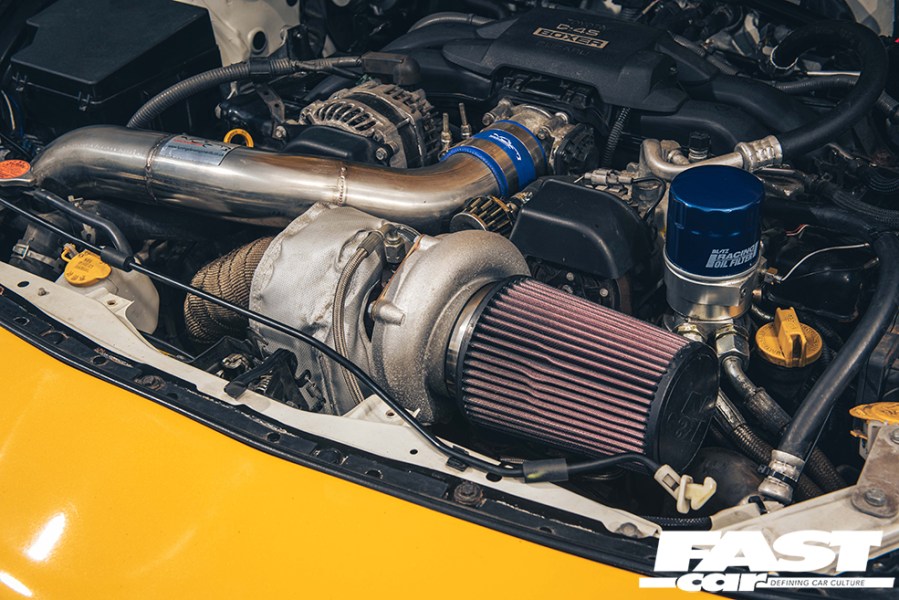
Turbochargers
Of course, the forced induction everyone expects to see on a Subaru boxer engine, is a turbo, and there’s plenty of turbo conversion kits out there. Power gains on an otherwise relatively standard car are similar to supercharging, at around 280-300 horsepower, but the main advantage is, whereas the current supercharger kits max out at around 360bhp, there are off-the-shelf turbo kits that can manage well over 600 horsepower once you build the engine and fuel system to cope!
Beyond around 320 horsepower you are starting to push the limits of the standard rods on the FA20 engine, and beyond around 350 you’re risking throwing a conrod, so if you’ve got big goals then it’s time for upgraded internals. At this point the aforementioned camshafts and even stroker kits start to make more financial sense, as while the percentage gain was small on naturally aspirated cars, there’s a much bigger overall gain when boost is involved. There are built FA20s out there making over 650 horsepower without issue.

This GT86 has a 2JZ engine swap
Engine swaps
Of course, we have to mention engine swaps, as there seems to be more big power engine swapped Z*6 chassis cars than tuned FA20 ones! K-swaps, LS-swaps, 2JZ swaps, Coyote swaps, and many more are available as off the shelf kits, not to mention insane custom swaps such as Ferrari engines and more that already have been fitted.
If you’re wondering why it’s very rare to see the turbocharged version of the FA engine (as seen in modern Subaru WRX) swapped in to these cars, it’s because generally, it’s just not worth it. While that engine is good, to make it work correctly in the Z*6 chassis means a lot of complex wiring changes, and as the original FA20 engine has port injection and better flowing cylinder heads compared to the direct injection only turbo versions, it’s generally considered easier and better to simply turbocharge the original engine.
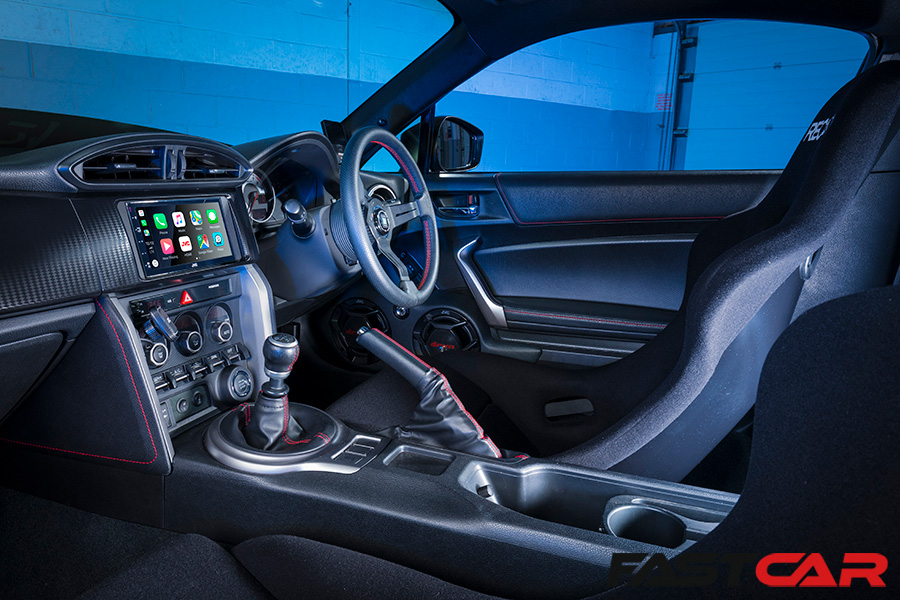
Transmission
The factory six speed manual transmission isn’t bulletproof, but it’s a pretty good box, with most people agreeing they’re reliable enough up to 400 horsepower as long as you don’t make a habit of missing shifts. The factory clutch, however, is not particularly strong, and beyond mild levels of N/A tuning an uprated clutch is needed to prevent slippage. The gearbox itself is the AZ6/J160, also used in S15s, RX-8s, Altezzas, and later MX-5s, so information and upgrade kits are widely available should you wish.
Should you really be looking to put insane amounts of power to the ground, there’s even a conversion out there to fit the practically indestructible Ford 8.8 rear diff in the Z*6 chassis, though for the vast majority of people the factory Torsen LSD rear diff will cope just fine.
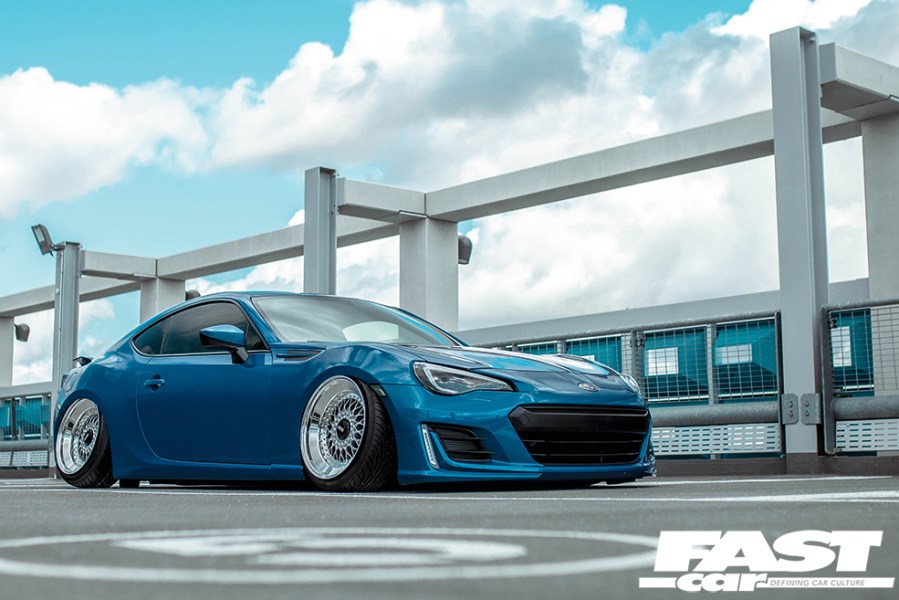
Suspension
These are fantastic handling cars from the factory with no real weak points, so there’s no need to reinvent the wheel, and suspension upgrades to these cars are about simply improving what’s already there.
Coilovers and uprated ARBs are the main way to go for most builds, and are more than enough to be very capable on road and track, especially when combined with a good geometry setup. But, if you want to get serious, there’s every single aftermarket adjustable arm available you could ever need, plus the obligatory polyurethane suspension bushes.
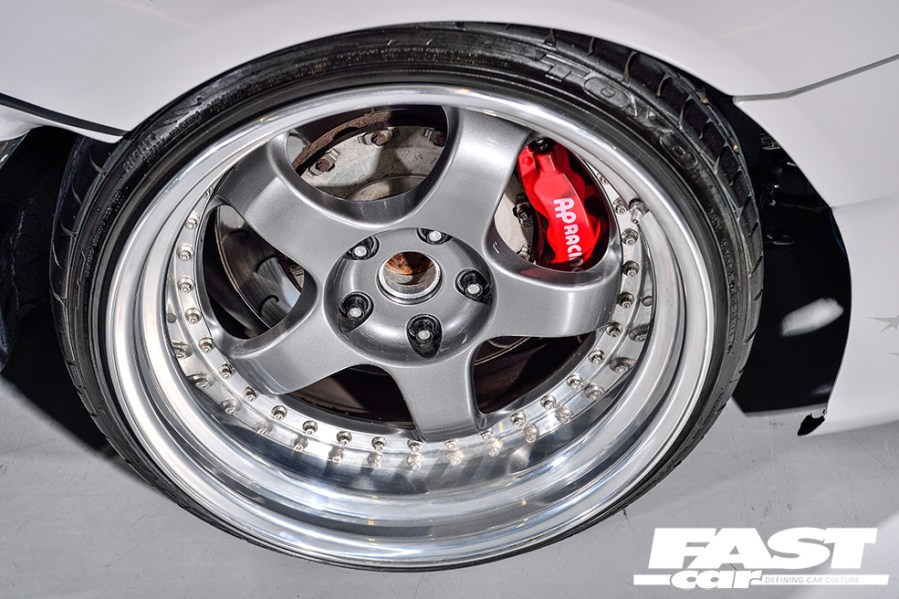
Brakes
While none of the Z*6 chassis cars have bad brakes, in fact they are all very good indeed, there is actually a few factory brake variations depending on the country of origin and trim level. The most common spec is dual piston front and single piston rear calipers with 290-295mm discs, but the base model versions in some countries actually had slightly smaller discs, so it’s worth bearing that in mind. On the other end of the scale there was special editions and optional performance packs available in some regions that upgraded it to 4-pot front brakes and even larger discs.
Regardless of what setup you start with, the first upgrade, and likely all you’ll need for a fast road car, is some uprated front brake pads. These can make a dramatic difference to stopping power, far more than any other single upgrade.
For the ultimate stopping power and of course awesome looks, there’s countless front and rear big brake kits available, with 4 or 6 pot calipers and two piece lightweight brake discs.
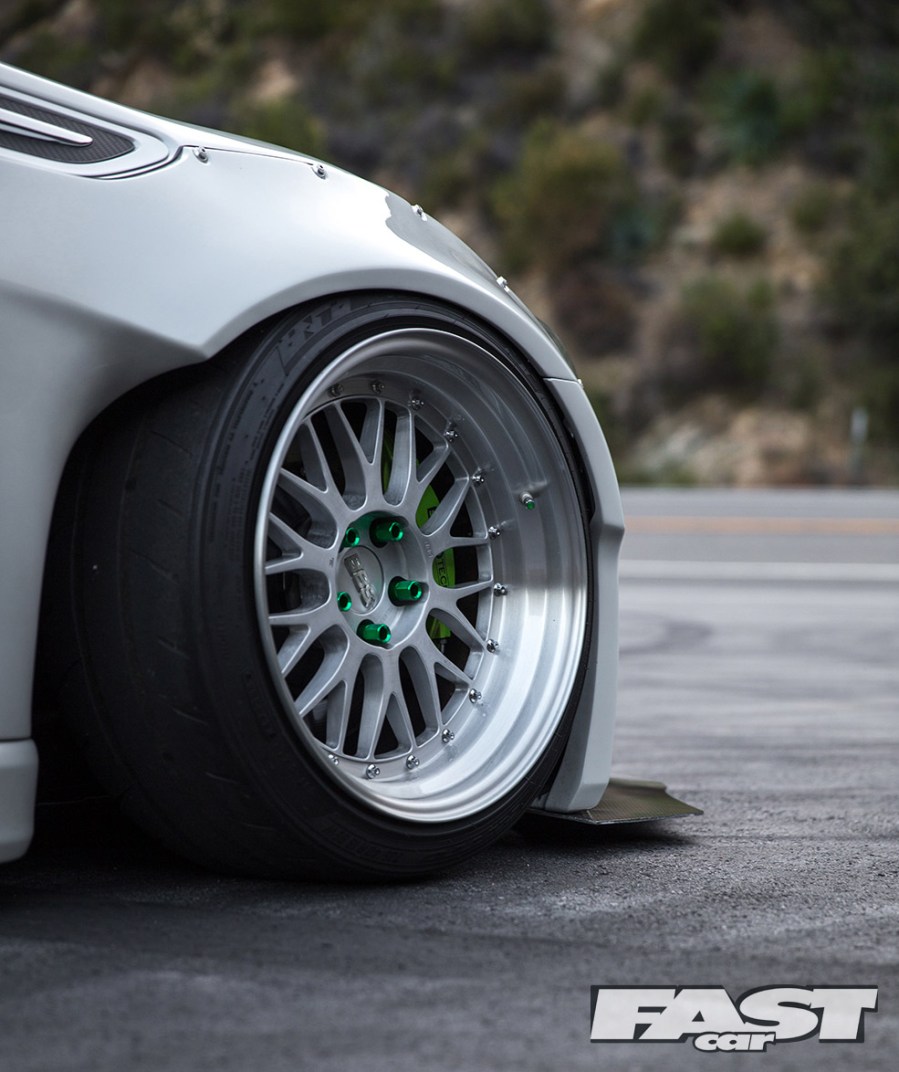
Wheels and tires
One of the first upgrades for any modified Z*6 chassis tends to be wheels and tires, because, quite frankly, the standard ones are pretty ugly. While the standard wheel offset is quite high at around ET48 and the stock wheels and tires are narrow too, thankfully there’s still plenty of room in the factory arches for upgrades that are both much nicer looking and offer more grip.
8-8.5inch wide wheels of an offset of ET35-45 with 225 or 235 wide tires fit with no arch work, and people generally use 17 or 18 inch wheels, though some 16s can fit too if big wheels aren’t your thing. With a bit of mild arch rolling and camber you can go to as low offset as ET35 and 9.5in wide wheels all round without the need for aftermarket wide arches.
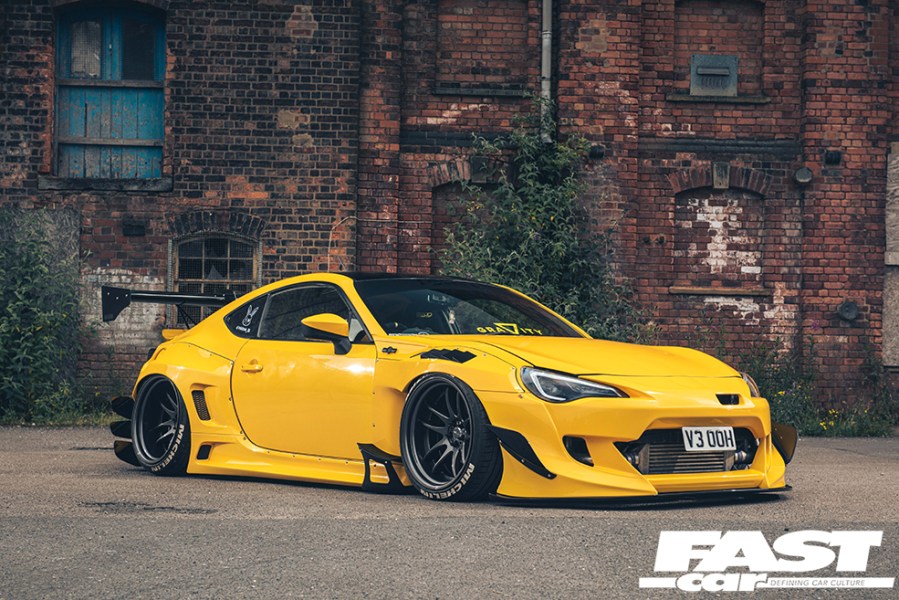
Body/Exterior
Of course, there’s no end of bodykits out there for the Z*6, but as this is a tuning guide, we’re sticking to performance related exterior parts. This segment is still well-catered for, especially when it comes to weight saving. Carbon bonnet, boot, doors, roof, and more, are all available for these cars, making for a considerable weight saving over the OEM metal panels.
When it comes to functional aero for considerable downforce or drag improvements, these are generally custom made for this chassis, but thanks to absolutely incredible Time Attack cars using this chassis, such as the Roger Clark Motorsport Gobstopper 3 and the HKS TRB-03, there’s no shortage of inspiration.
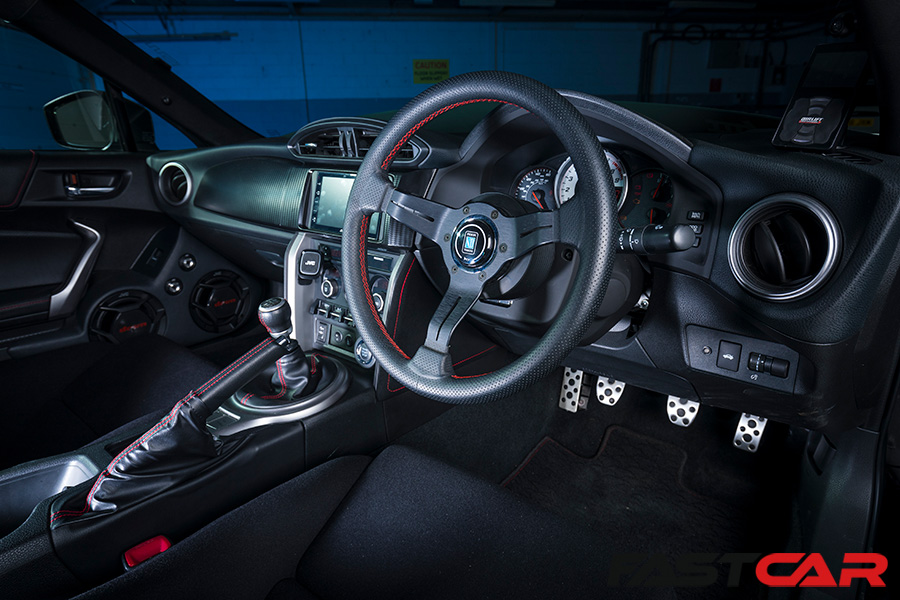
Interior
The standard interior is a pleasant place to be, and the factory seats are relatively supportive for road use, but for track use you will struggle without the extra support of an aftermarket bucket seat. Thankfully bolt-in seat rails are available to directly fit side mount racing seats to the Z*6 chassis, making seat upgrades very easy, and like all popular cars, boss kits to fit aftermarket steering wheels are available also.
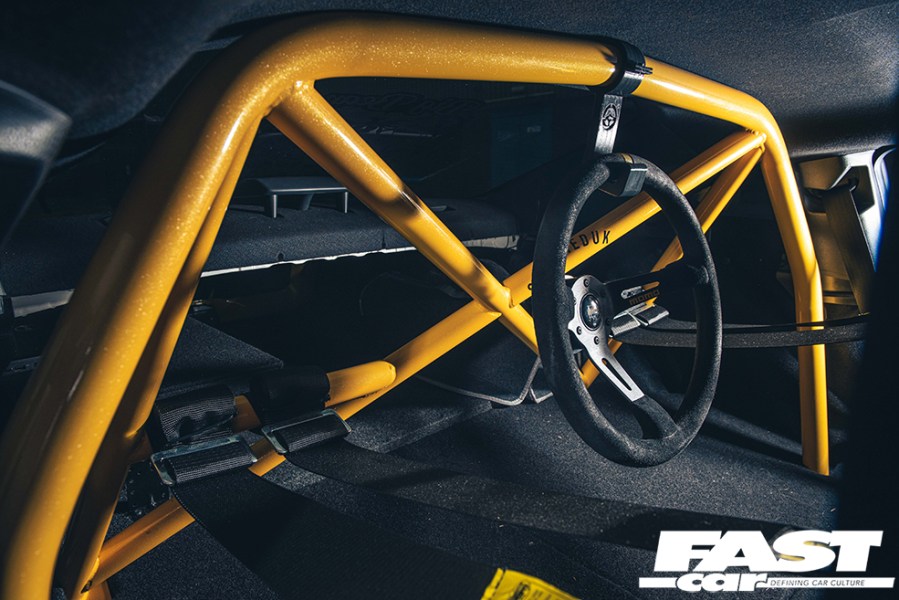
Chassis
While full and half roll cages are available, if you wish to stiffen the chassis in other ways, there’s a quite staggering amount of chassis braces available for these cars. Front and rear upper and lower strut braces, front wing braces, subframe braces, differential braces, and more. As ever, there is much debate on the effectiveness of each part, but many of these parts are well documented to be useful on high power and/or hard tuned Z*6 chassis cars, especially things like differential and subframe bracing.
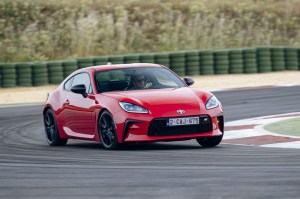
Second-generation ZN8/ZD8
While this guide is about the original first-gen cars, the second-gen cars were released in recent years, and the new platform is generally accepted to be even better than the fantastic original. The biggest improvement is the engine, now a 2.4-liter unit making around 230bhp, but most notably it has much more low down torque thanks to the bigger capacity engine; in fact peak torque rpm has almost halved, while it’s still as revvy as the previous version.
They’re still currently relatively rare and expensive cars compared to the first generation, and so far have comparatively few tuning upgrades available, but they are likely to be just as popular to tune in the coming years.

